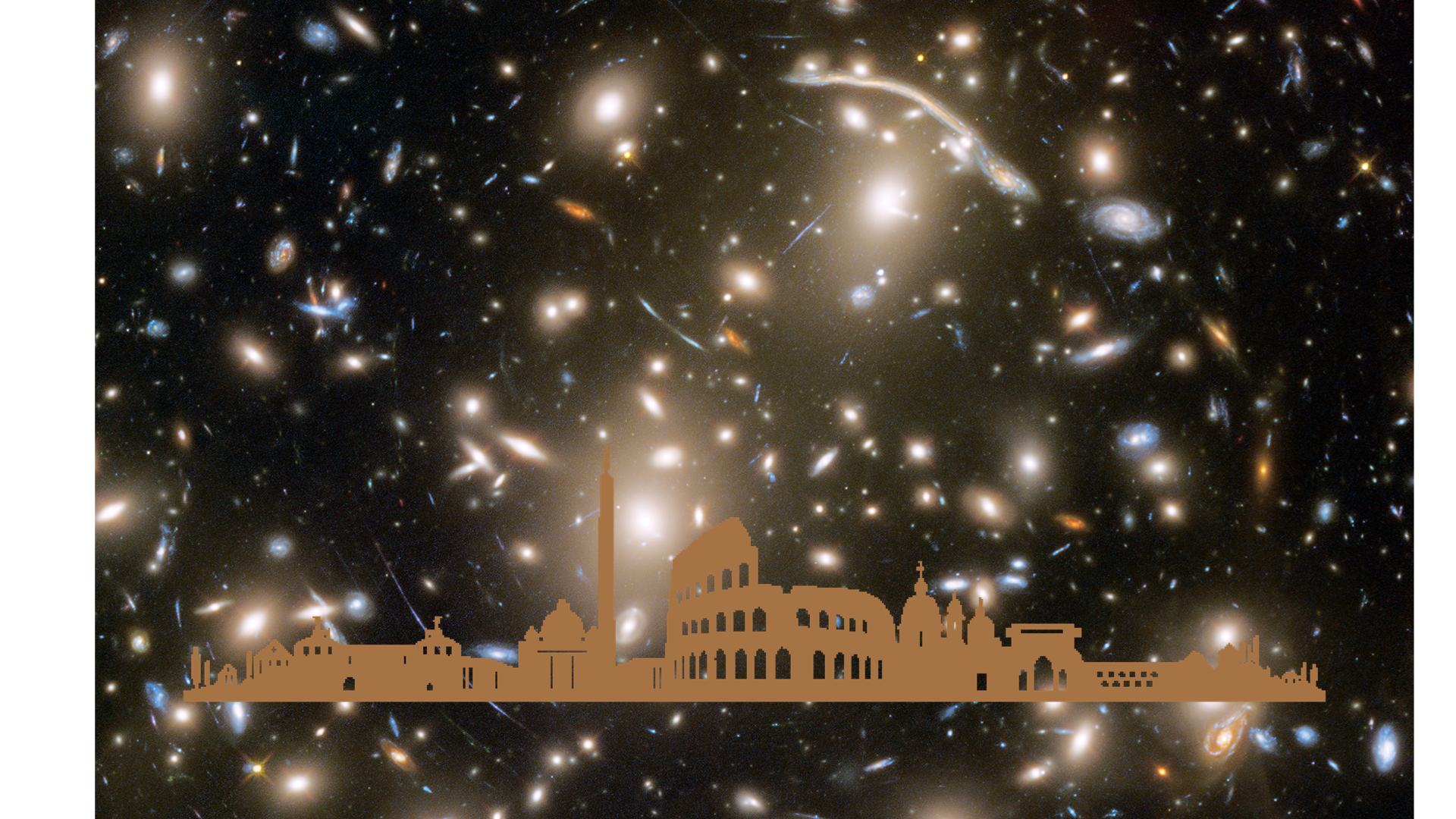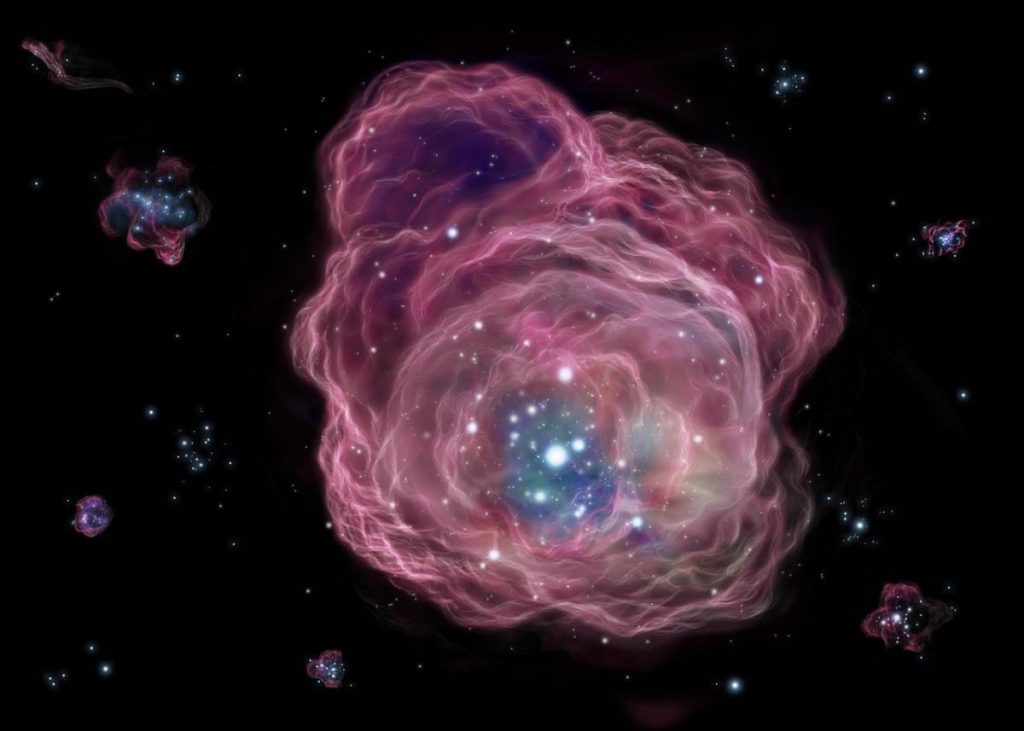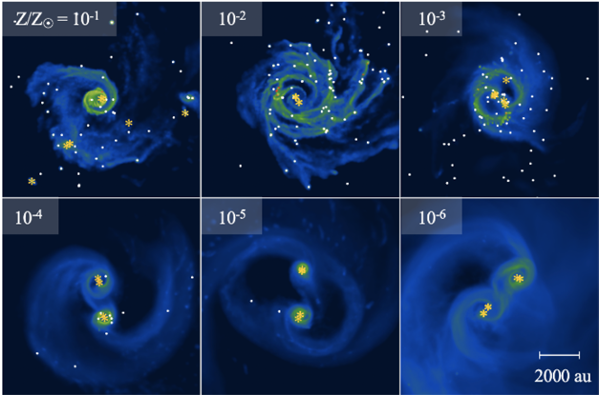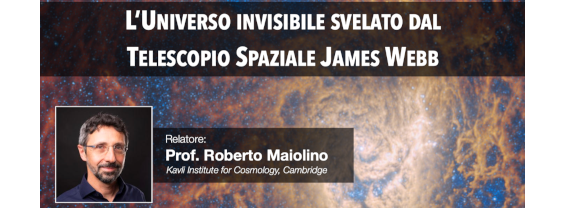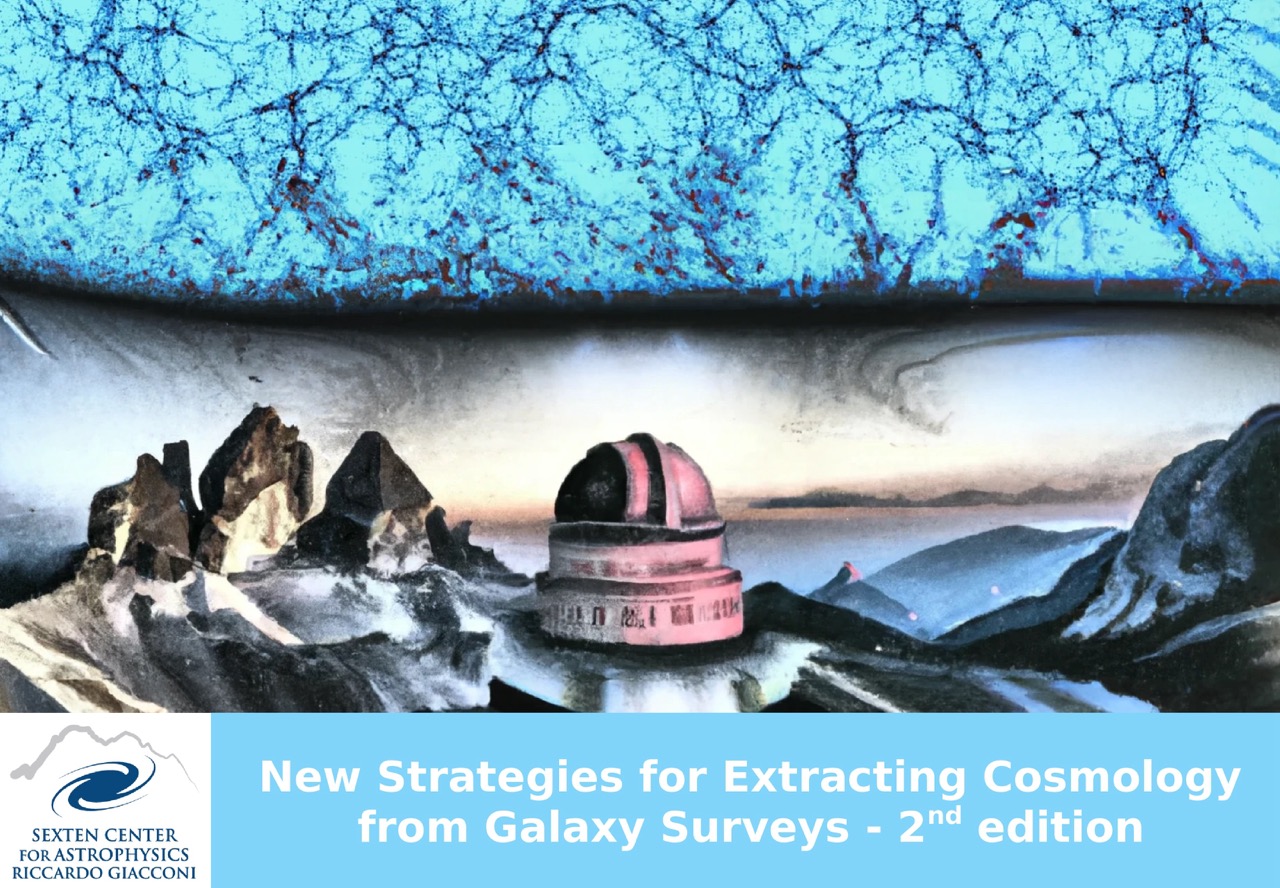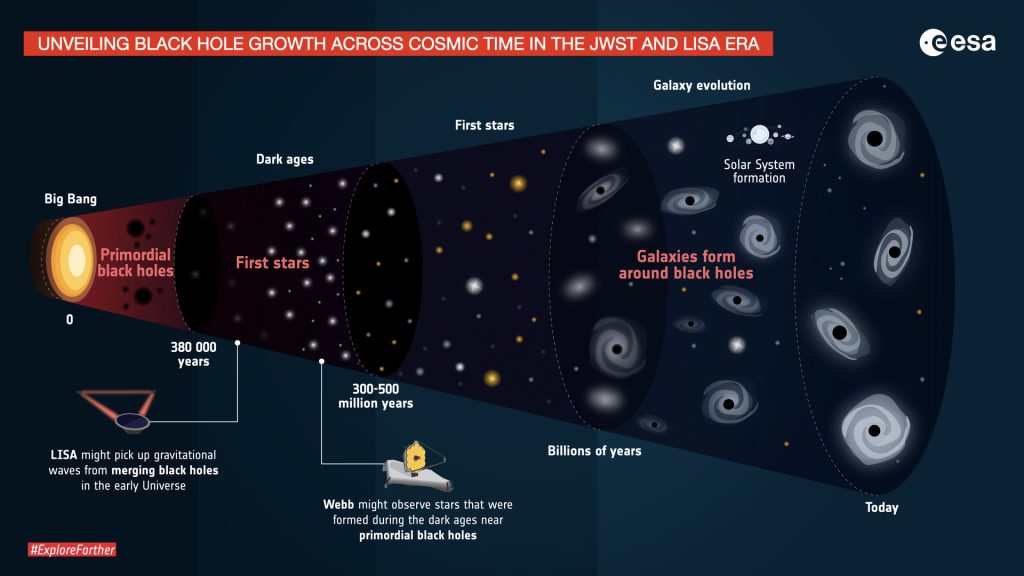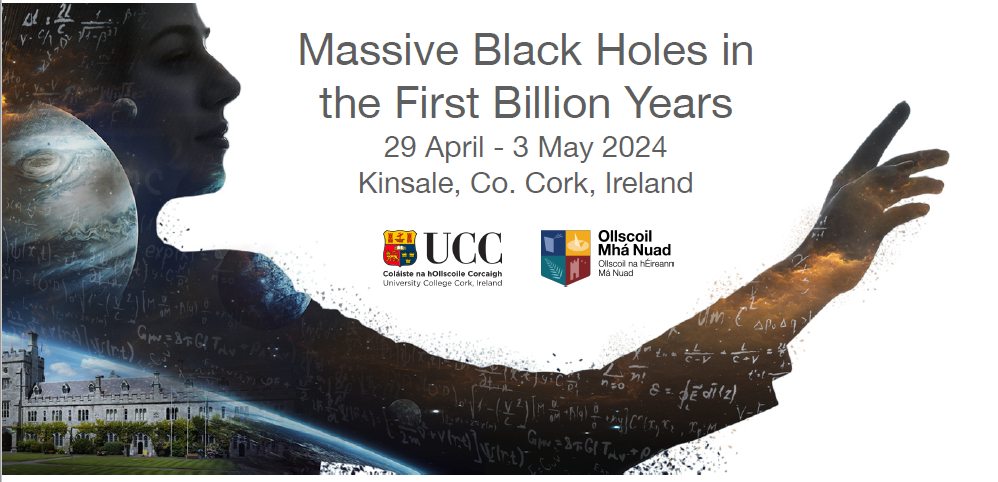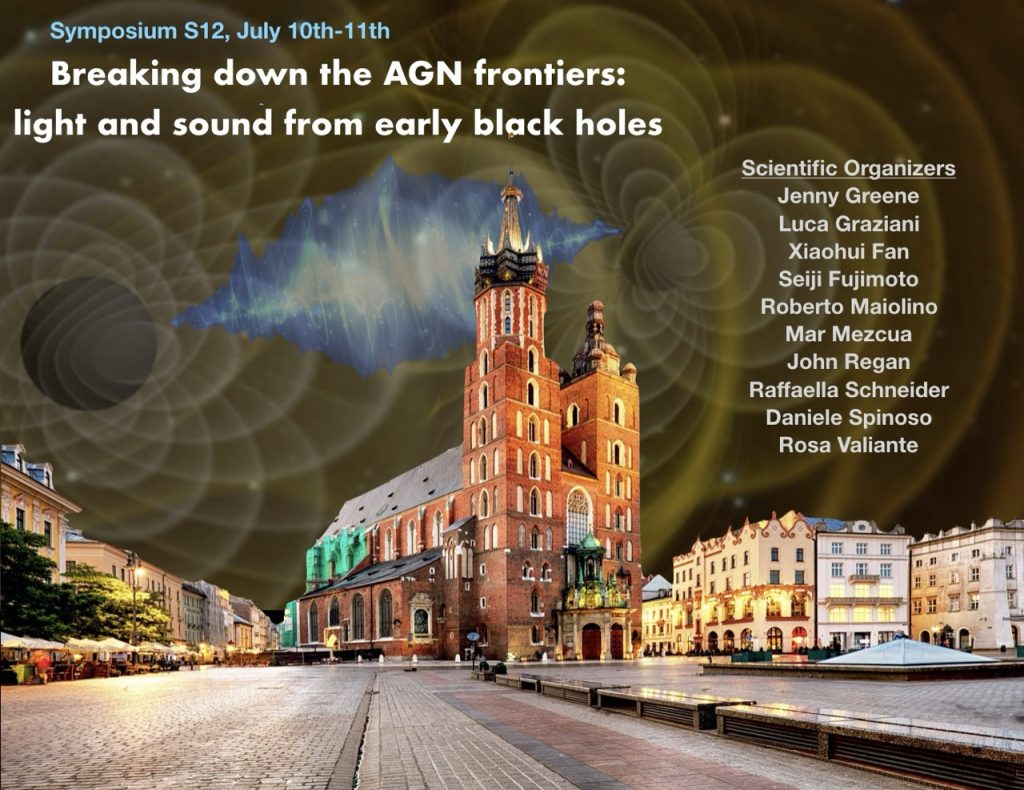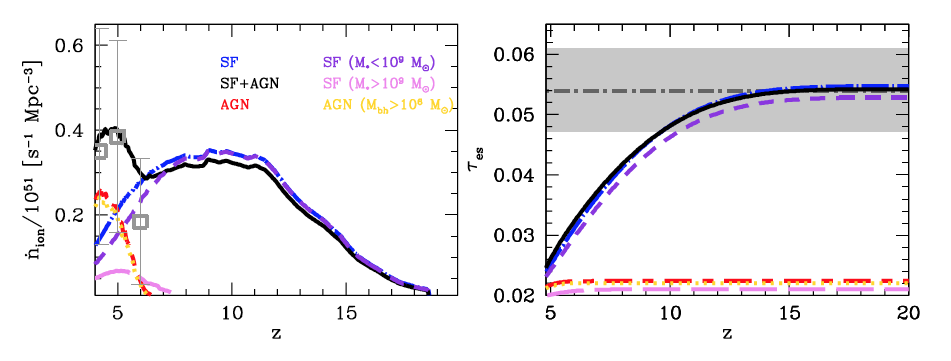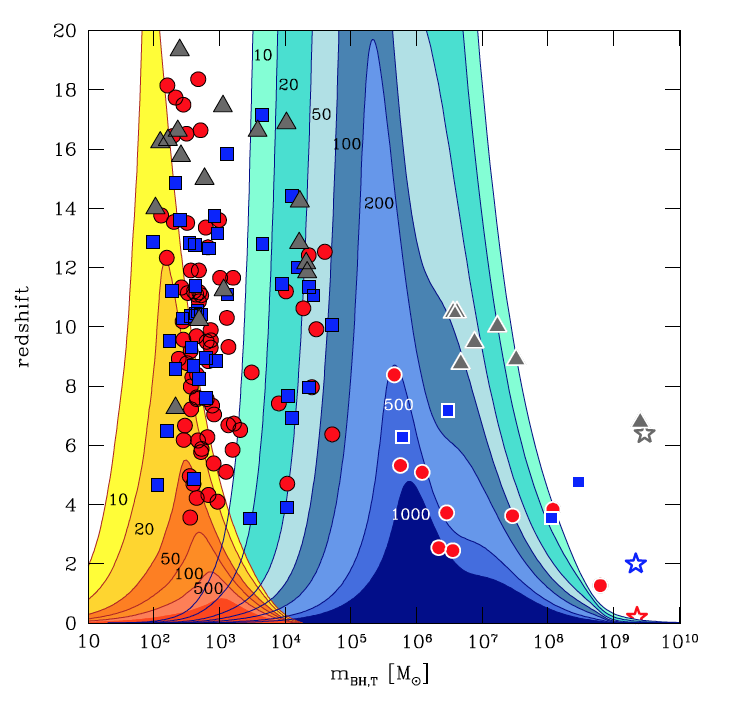Supervisor: Raffaella Schneider
co-supervisors: Rosa Valiante, Tommaso Zana
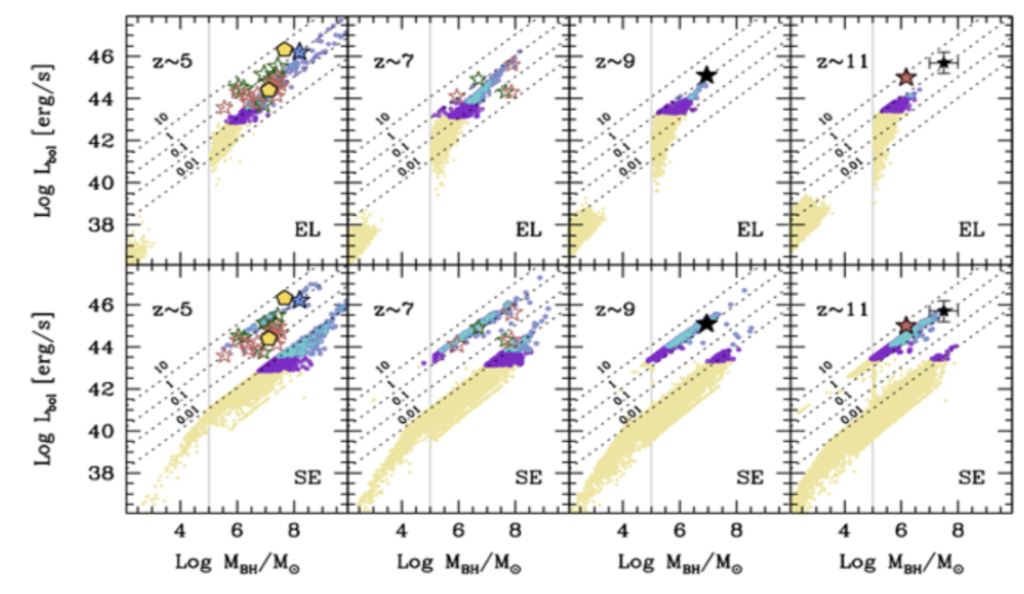
Fig: Relation between the bolometric luminosity (Lbol) and BH mass (Mbh) predicted by Schneider+(2023) at 5 < z <11 using CAT (yellow, cyan and violet dots). The upper row shows the results of the Eddington-limited model (EL), and the bottom row the results for the super-Eddington model (SE). The diagonal dashed lines are reference values of 𝜆Edd = 𝐿bol/𝐿Edd = 0.01, 0.1, 1, and 10, and the vertical grey lines mark the initial heavy BH seed mass adopted in CAT (105 Msun). Starred data points show the luminosities and BH masses identified in JWST surveys. The properties of some of the observed systems at 𝑧 ∼ 5 are consistent with predictions of the EL model, but the luminosity and BH masses of the remaining systems at 𝑧 ∼ 5 and of most of the systems at 𝑧 ≳ 7 are better reproduced in the SE model.
A big question that remains unsolved pertains to the existence of hundreds of quasars at 6 ≤ z ≤ 7.64, which show that 10^9 − 10^10 Msun super massive black holes (SMBHs) can form in ∼ 700 Myr, by efficiently growing mass onto smaller black hole (BH) seeds (see Volonteri+2021; Inayoshi+2020). During the past year the advent of JWST has started to revolutionize this field: several tens of candidate Active Galactic Nuclei (AGNs) at z > 3 have been revealed by deep near-IR photometry, and dozens of AGNs have been identified via their broad emission lines, or as counterparts of X−ray sources. The general common features of these newly discovered AGNs are that these are orders of magnitudes fainter and lighter than quasars, with bolometric luminosities of Lbol ≈ 10^(43.5 – 46) erg/s and black hole masses Mbh ≈ 10^(5.3 – 8) Msun, with the lightest ones that border the mass range for the formation of heavy BH seeds. Intriguingly, the majority of these newly discovered accreting BHs appear to be over-massive compared to the stellar mass of their host galaxies, relative to local MBH − M⋆ relation. We used CAT to test various BH mass growth scenarios against new JWST observations (Schneider+23, see Figure). Our findings suggest that AGNs with properties similar to those observed with JWST can be explained by scenarios where BHs originate from Eddington-limited gas accretion onto heavy BH seeds, or through phases of super-Eddington accretion (Pezzulli+2016, Trinca+2022). However, our understanding of the conditions enabling super-Eddington growth is still limited. We aim to assess the conditions that allow for super-Eddington accretion of BH seeds, its duration, and the feedback it exerts on the host galaxy. High-resolution hydrodynamical simulations will be conducted, focusing on an isolated galaxy circumnuclear disk using the GIZMO code, where a novel BH accretion and momentum-driven feedback model has been recently implemented (Sala+21), which self-consistently account for the evolution of BH mass and spin (Cenci+21). This version will be accessible to our team through an established collaboration with the Institute for Computational Science at the University of Zurich (Pedro Capelo; Lucio Mayer). The results will be used to develop a simulation-informed analytic model to be integrated into CAT.
References:
Cenci+21, MNRAS, 500, 3719
Inayoshi+20, ARA&A, 58, 27
Pezzulli+16, MNRAS,458, 3087
Sala+21, MNRAS, 500, 4788
Schneider+23, MNRAS, 526, 3250
Trinca+22, MNRAS, 511, 616
Volonteri+21, Nat Rev Phys, 3, 732
